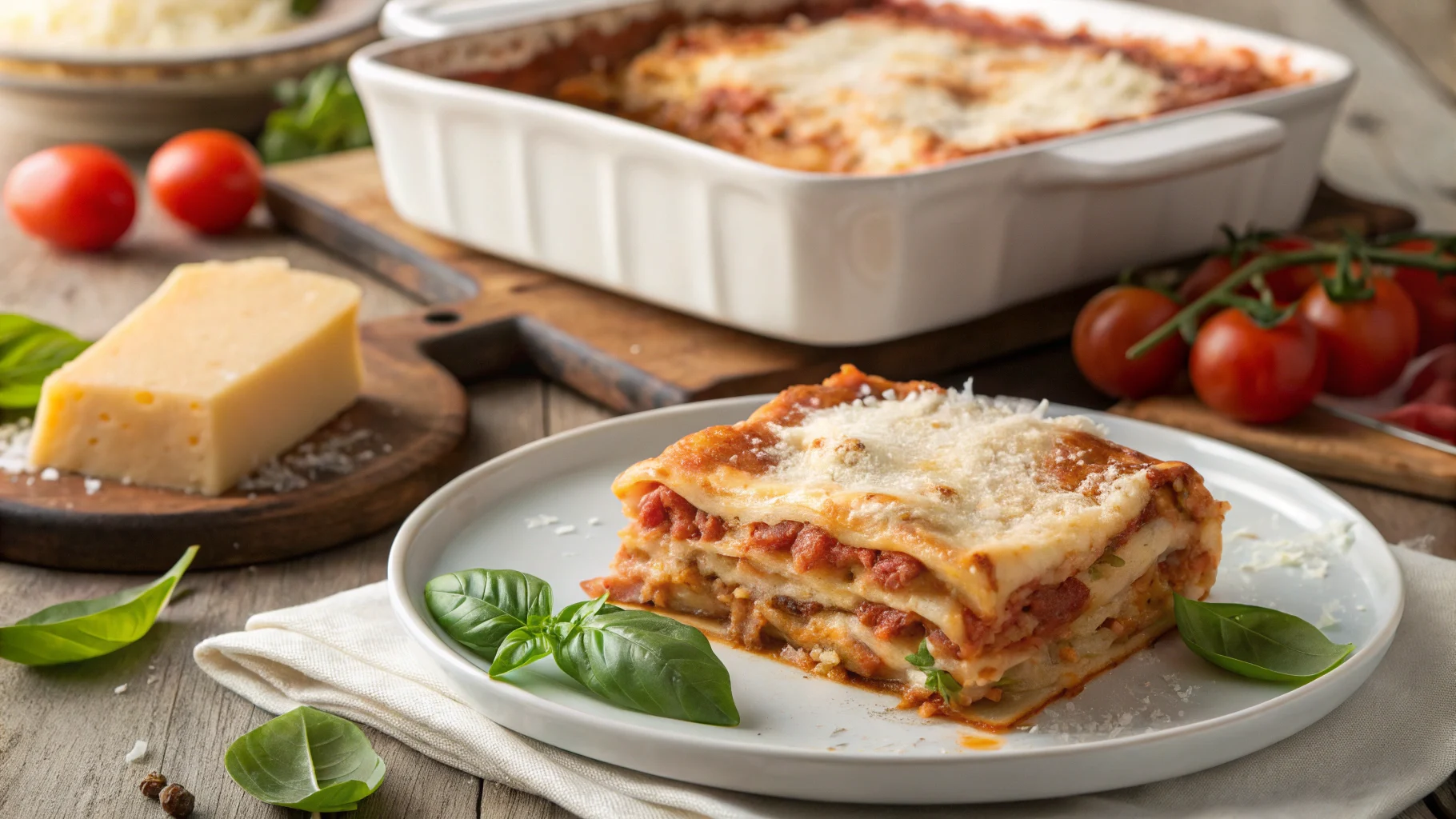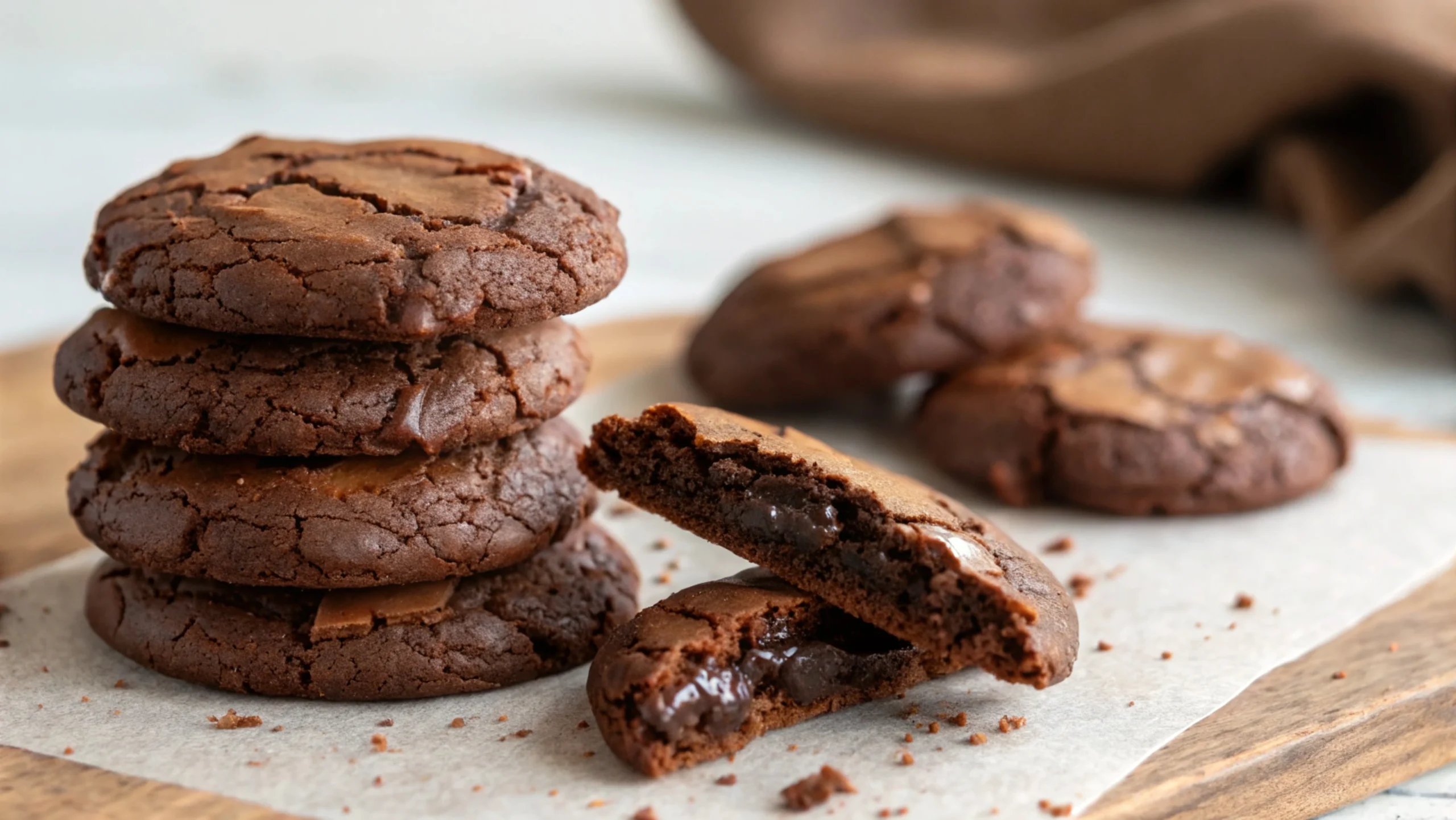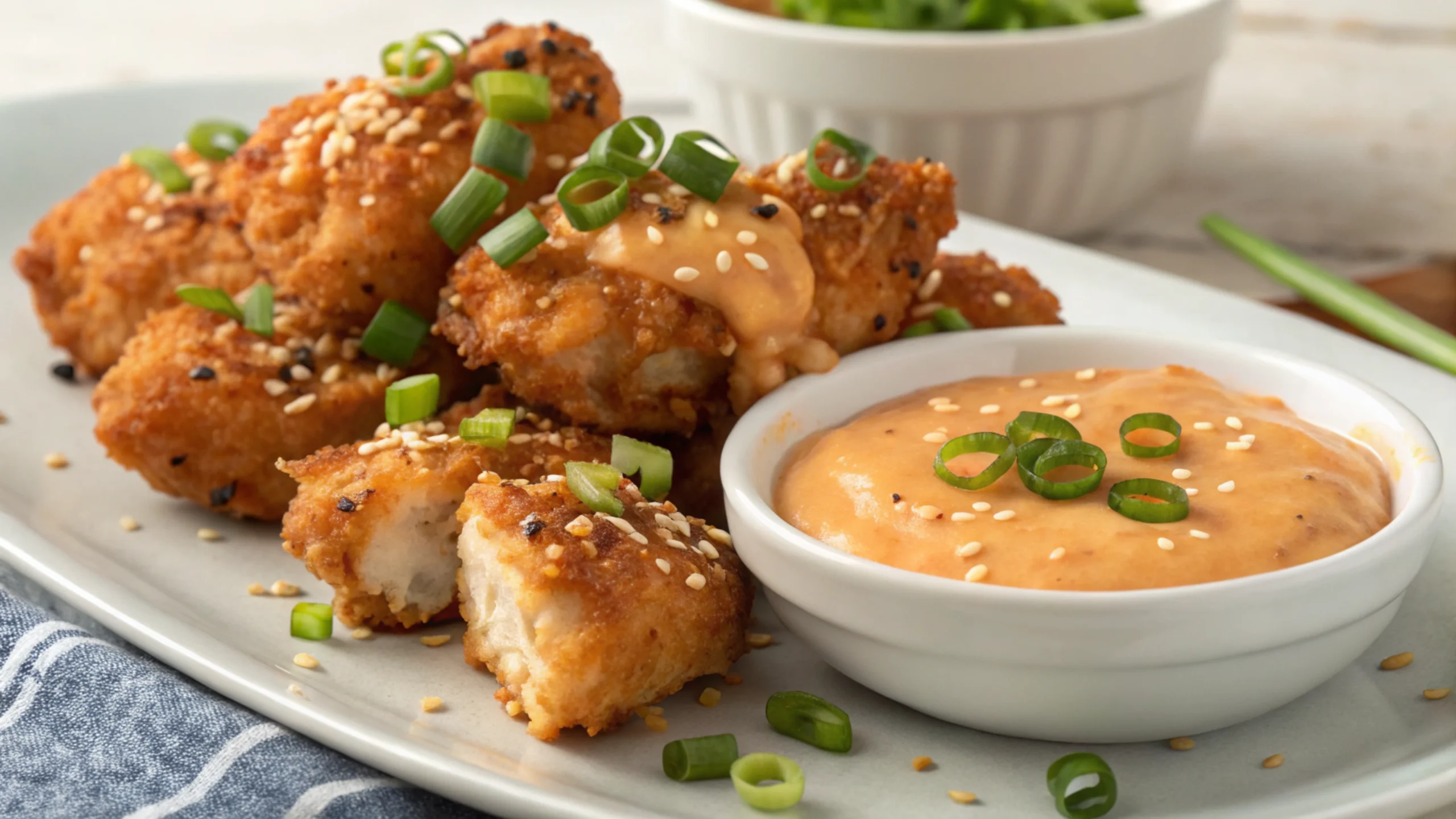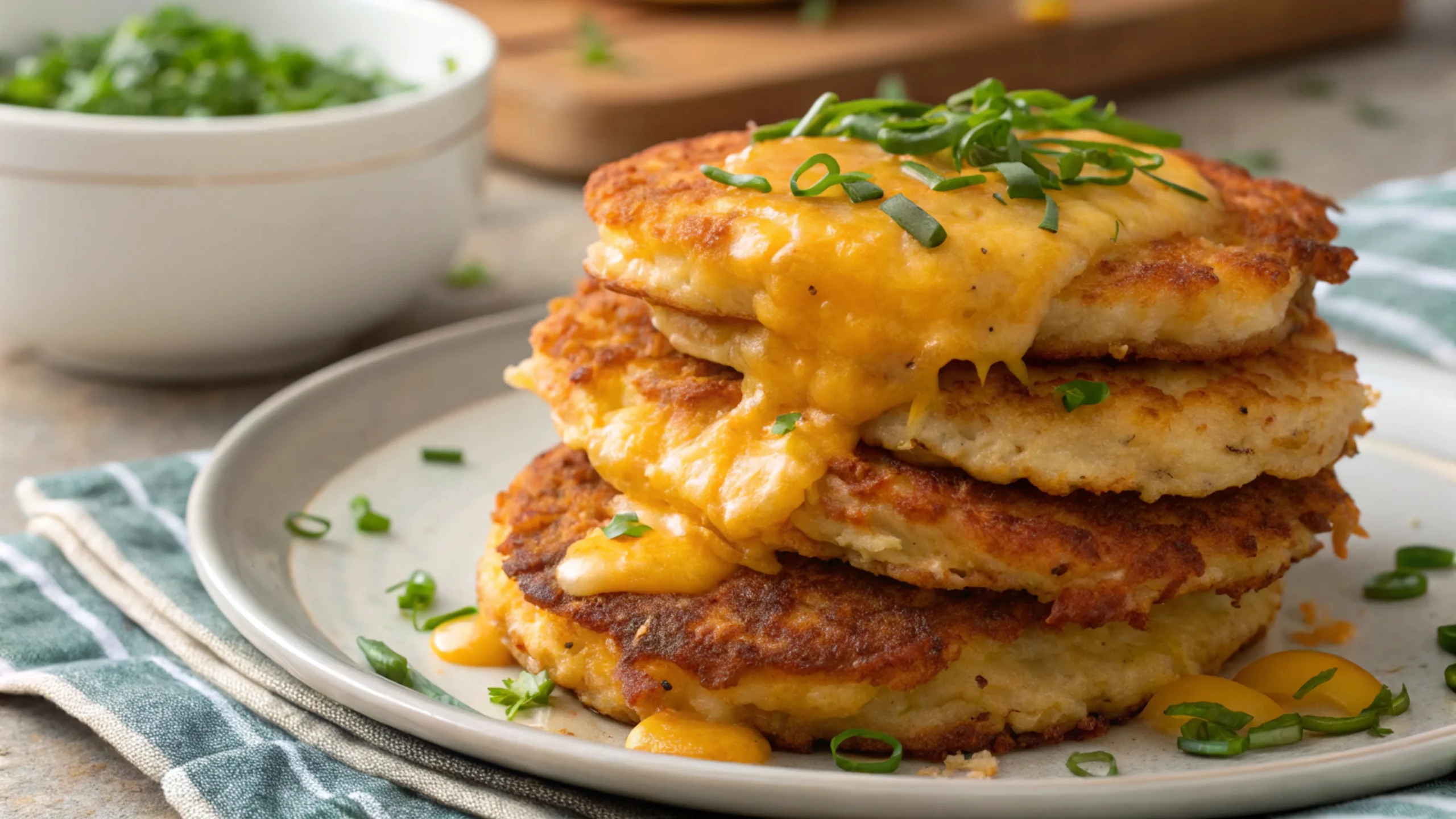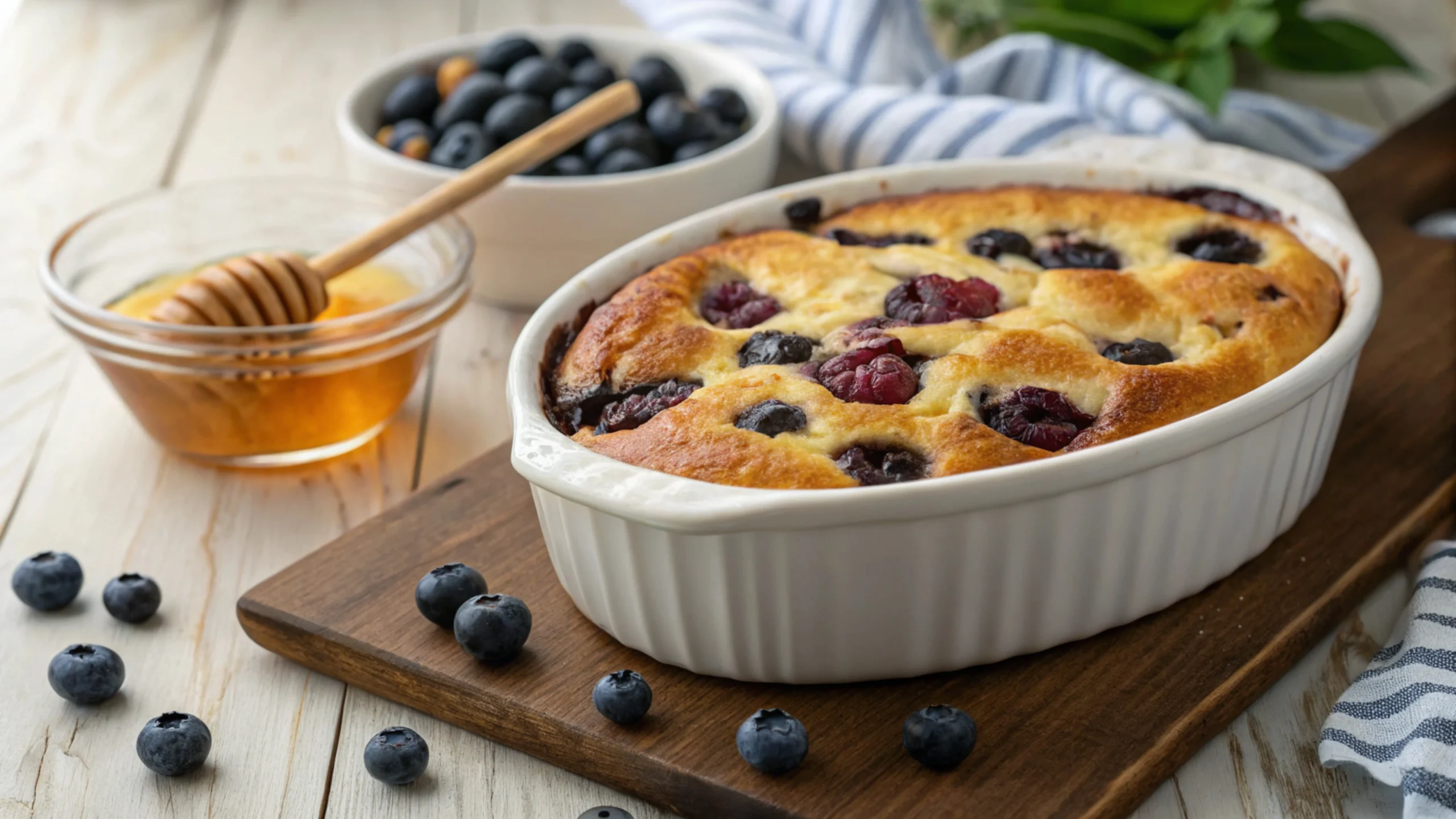Introduction
Curious about how cottage cheese tastes when cooked? Many food enthusiasts love exploring the versatility of this protein-packed ingredient. Cottage cheese is a staple in many kitchens, celebrated for its creamy texture and mild tangy flavor. But when cooked, it undergoes a fascinating transformation in both taste and texture.
In this article, we’ll dive into how cooking changes the flavor of cottage cheese, what textures you can expect, and the best recipes to try. Whether you’re new to cooking with cottage cheese or looking for fresh inspiration, this guide will show you why this simple ingredient is a game-changer in the kitchen.
Table of Contents
Understanding Cottage Cheese
What Is Cottage Cheese?
Creamy cooked cheese recipes is a fresh cheese made from the curds of cow’s milk. Unlike aged cheeses, it has a light, tangy flavor and a soft, creamy texture. Its unique composition is due to minimal processing, which retains much of the whey, giving it a distinct curdled appearance.
This cheese comes in various forms, including low-fat, full-fat, and lactose-free options, making it a go-to choice for health-conscious individuals. Rich in protein, calcium, and essential nutrients, Cooked cottage cheese flavor is celebrated for its role in promoting muscle growth, bone health, and weight management.
Types of Cottage Cheese
Cottage cheese comes in two main varieties:
- Small Curd: These are tender and delicate, perfect for recipes requiring smooth incorporation.
- Large Curd: Chunkier and firmer, offering a distinct bite when cooked.
Both types provide unique results when heated, with the texture playing a key role in how they transform during cooking.
Raw vs. Cooked Cottage Cheese
Raw cottage cheese has a mild, tangy flavor with a creamy mouthfeel. When cooked, the flavor deepens, becoming nuttier and slightly savory. The curds may soften into a velvety consistency or firm up depending on the cooking method, adding a whole new dimension to your dishes.
How Cooking Changes the Taste of Cottage Cheese
The Chemistry of Cooking Cottage Cheese
When cottage cheese is exposed to heat, it undergoes a fascinating transformation. The protein in the curds, primarily casein, coagulates when heated. This process causes the curds to firm up or soften, depending on the temperature and cooking method. Additionally, the heat evaporates some of the water content, concentrating the cheese’s flavors.
Unlike mozzarella or cheddar, cottage cheese doesn’t melt into a gooey mass. Instead, it becomes either creamier or firmer, offering a variety of textures that suit both savory and sweet dishes.
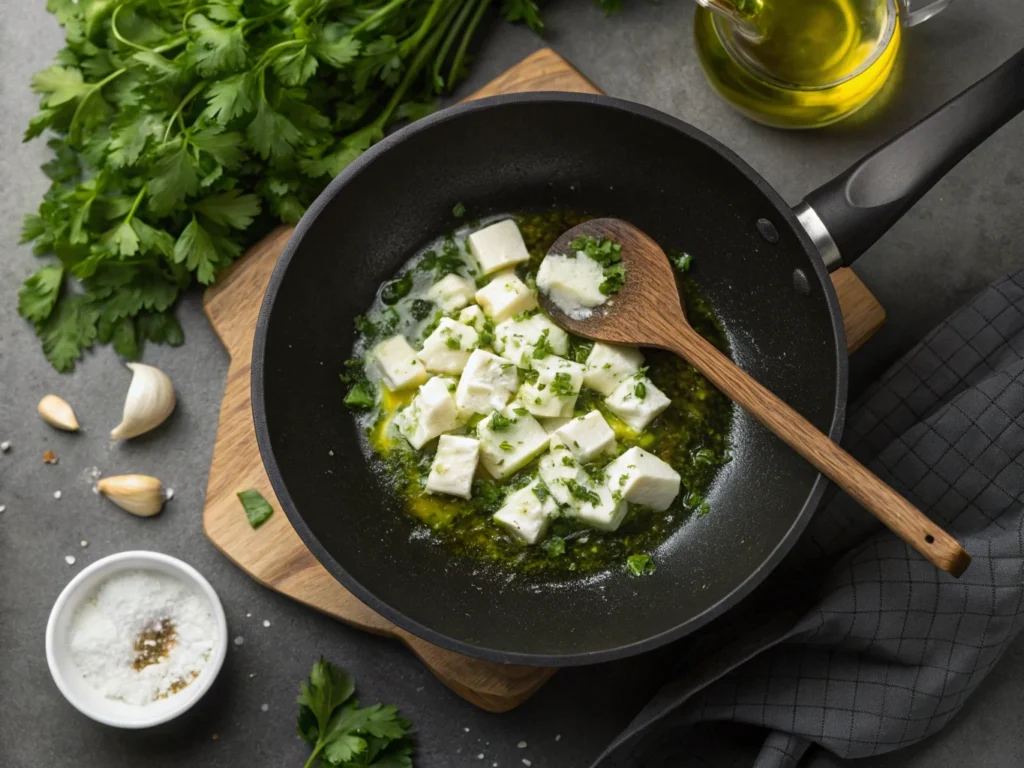
Taste Profile When Cooked
Raw cottage cheese is known for its mild tanginess with a slightly salty undertone. However, cooking enhances its natural flavors, making it richer and nuttier. When baked or sautéed, the tanginess mellows, and a subtle sweetness can emerge. This unique flavor profile complements a wide range of ingredients, from vegetables to sweet fruits.
For instance:
- Baked Cottage Cheese in casseroles develops a golden crust that’s both savory and slightly caramelized.
- Sautéed Cottage Cheese has a light toasty flavor, making it ideal for savory stir-fries.
- Cooked Cottage Cheese in Desserts brings out its creamy, slightly sweet nature.
Texture Transformation
The texture of cottage cheese changes dramatically when cooked:
- In Baking: The curds blend seamlessly into a creamy mixture, especially when mixed with eggs or flour.
- In Soups or Sauces: It dissolves into a velvety consistency, thickening the dish while adding richness.
- In Frying or Sautéing: The curds retain their shape but become slightly crisp on the edges, creating a delightful contrast.
This adaptability makes cottage cheese a fantastic choice for chefs and home cooks alike, as it can elevate both the flavor and texture of recipes.
Learn more about why draining cottage cheese can improve your recipes and how to remove excess liquid from cottage cheese for the best results.
Cooking Methods That Affect the Taste
Baking Cottage Cheese
Baking is one of the most popular methods for cooking cottage cheese. When exposed to consistent heat, the curds soften and meld with other ingredients, creating a creamy, cohesive texture. The top layer often develops a golden, slightly caramelized crust, adding a nutty flavor to the dish.
Examples of Baking Dishes
- Casseroles: Cottage cheese is a staple in baked dishes like lasagna, where it provides a creamy layer that complements tangy tomato sauces and savory meats.
- Quiches: Combined with eggs, cottage cheese becomes the perfect custard-like filling for quiches.
- Savory Pies: In dishes like spanakopita or shepherd’s pie, cottage cheese adds depth and creaminess.
Sautéing Cottage Cheese
Sautéing cottage cheese in a pan with a bit of oil or butter is a simple way to enhance its flavor. The heat slightly caramelizes the curds, giving them a toasted, nutty taste while maintaining their creamy interior.
Best Uses for Sautéed Cottage Cheese
- Toppings: Use sautéed cottage cheese as a topping for salads, roasted vegetables, or even tacos.
- Side Dishes: Combine it with garlic, onions, and herbs for a savory accompaniment to main courses.
Adding to Soups and Sauces
Cottage cheese can be stirred into soups and sauces to thicken and enrich their flavor. As it heats, the curds dissolve into a smooth, velvety consistency that blends seamlessly with other ingredients.
Popular Applications
- Creamy Soups: Add cottage cheese to tomato soup, mushroom bisque, or potato leek soup for a rich, satisfying texture.
- Pasta Sauces: Blend cottage cheese into a tomato-based or Alfredo sauce for an extra layer of creaminess.
Frying Cottage Cheese
Frying is another method that transforms cottage cheese into a completely different culinary experience. The process creates a crisp, golden crust around the curds while keeping the inside soft and creamy.
Examples of Fried Cottage Cheese Dishes
- Cottage Cheese Fritters: Small balls of cottage cheese mixed with breadcrumbs and spices, fried to perfection.
- Pancakes: Cottage cheese pancakes are light, fluffy, and slightly crispy on the outside.
- Savory Patties: Combine cottage cheese with vegetables and spices to create patties that can be fried and served as a snack or side.
Grilling Cottage Cheese
Grilling cottage cheese is less common but equally delicious. The high heat sears the curds, giving them a smoky flavor and a slightly firm texture.
Ideas for Grilled
- Kebabs: Skewer cubes of cottage cheese with vegetables and grill them to perfection.
- Grilled Sandwiches: Use cottage cheese as a filling, paired with spinach, mushrooms, or sun-dried tomatoes.
Check out the perfect Louisiana seafood gumbo recipe and learn how cottage cheese retains protein after cooking for a nutritious boost.
Popular Recipes Featuring Cooked Cottage Cheese
Savory Recipes
Lasagna with Cottage Cheese
One of the most beloved uses of cooked cottage cheese is as a creamy layer in lasagna. It acts as a lighter alternative to ricotta cheese, blending perfectly with marinara sauce, ground meat, and melted mozzarella. The baking process softens the curds, creating a rich and smooth texture that complements the dish’s hearty flavors.
- Pro Tip: Add herbs like parsley or basil to the cottage cheese layer for an extra burst of flavor.
Cottage Cheese-Stuffed Bell Peppers
In this classic recipe, hollowed-out bell peppers are filled with a mixture of cottage cheese, quinoa or rice, diced vegetables, and spices. Baking melds the flavors, while the cottage cheese provides creaminess to balance the pepper’s natural sweetness.
- Best Served With: A drizzle of tomato sauce and a side of garlic bread.
Scrambled Eggs with Cottage Cheese
Adding cottage cheese to scrambled eggs results in a fluffy, creamy texture with a subtle tangy flavor. This simple yet satisfying dish is perfect for breakfast or brunch and pairs well with toast or avocado.
- Quick Tip: Stir the cottage cheese in just before the eggs are fully set to keep it creamy.
Sweet Recipes
Cottage Cheese Pancakes
These pancakes are light, fluffy, and slightly tangy, offering a protein-packed breakfast option. The cottage cheese curds soften during cooking, giving the pancakes a unique texture that’s both creamy and airy.
- Toppings to Try: Fresh berries, a dollop of Greek yogurt, or a drizzle of honey.
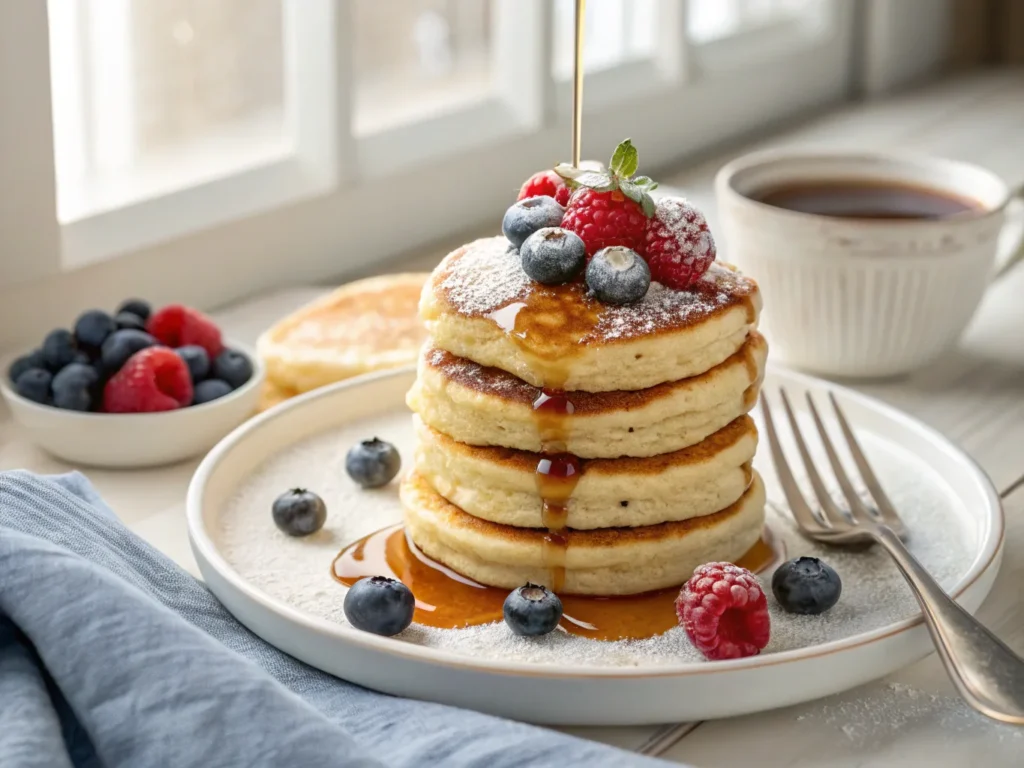
Cheesecake with Cottage Cheese
Cottage cheese can be used as the base for a light, creamy cheesecake. When blended and baked, it mimics the texture of cream cheese while offering a slightly tangy flavor that pairs beautifully with sweet ingredients like vanilla, citrus, or chocolate.
- Popular Variations: Try a lemon cottage cheese cheesecake or a crustless version for a gluten-free option.
Cottage Cheese Soufflé
This dessert is airy and elegant, with a delicate sweetness that’s perfect for special occasions. The heat transforms the cottage cheese into a smooth, custard-like consistency that practically melts in your mouth.
- Serving Suggestion: Dust with powdered sugar and serve warm.
Global Dishes Using Cooked Cottage Cheese
Indian-Inspired Cottage Cheese Curry
In Indian cuisine, paneer is often used in curries, but cottage cheese makes an excellent substitute. Simmering it in a rich, spiced tomato or cream-based sauce gives the cheese a bold, flavorful twist.
- Pair With: Warm naan bread or basmati rice for an authentic experience.
Eastern European Blintzes
Blintzes are thin crepes filled with a mixture of cottage cheese, eggs, and sugar, then pan-fried until golden. The result is a crispy exterior with a warm, creamy filling, often served with fruit preserves or sour cream.
- Why It’s Loved: It’s the perfect blend of sweet and savory.
Pierogi
A staple in Polish cuisine, pierogi are dumplings filled with cottage cheese and other ingredients like potatoes or onions. Boiled and then pan-fried, they offer a chewy texture with a flavorful, creamy center.
Try the decadent salmon sushi bake recipe and explore how cottage cheese changes when cooked to add a protein punch.
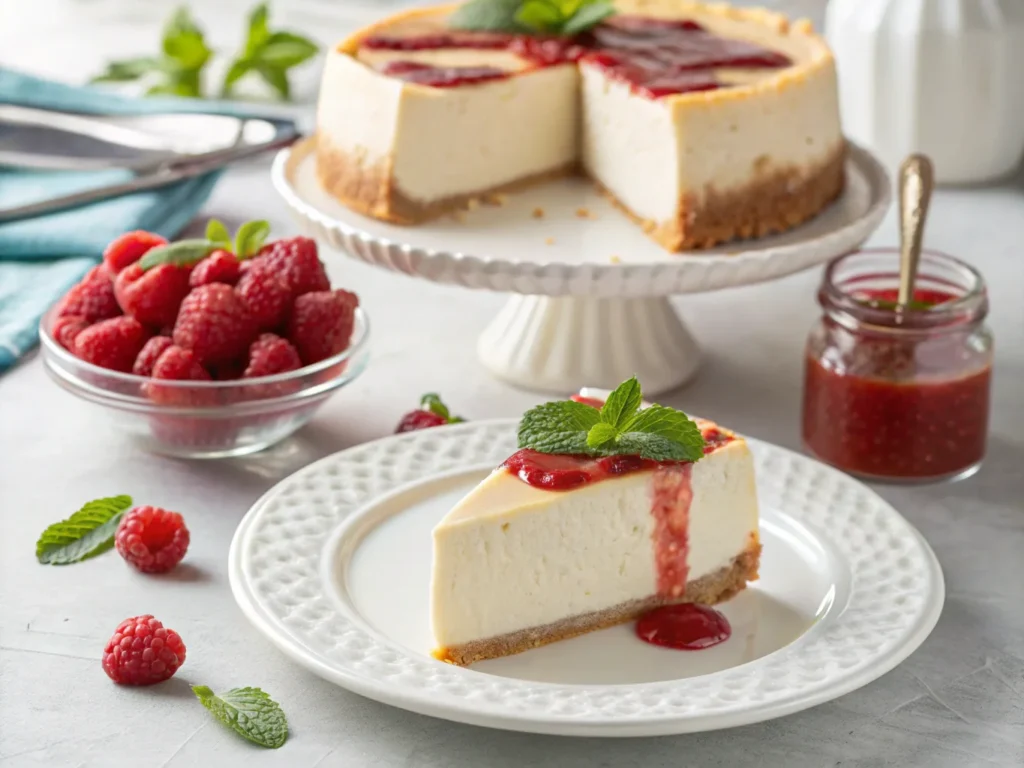
Benefits of Cooking
Enhanced Flavor
One of the standout benefits of cooking cottage cheese is the way it transforms its flavor. Raw cottage cheese has a mild, slightly tangy taste, but cooking deepens its profile. When baked, sautéed, or fried, the tanginess mellows, giving way to a nuttier, richer, and sometimes subtly sweet flavor. This makes it an excellent ingredient for adding complexity to a dish without overpowering other flavors.
- Example: In a baked lasagna, the cottage cheese complements the acidity of tomato sauce while enhancing the creaminess of the dish.
Improved Texture
Cooking cottage cheese alters its texture, making it suitable for a broader range of recipes. The heat causes the curds to soften, blend, or firm up depending on the cooking method. This versatility allows it to shine in both creamy dishes and those requiring a firmer, structured texture.
- Softened Texture: Ideal for soups, sauces, or baked goods, where the cheese melts into a velvety consistency.
- Firm Texture: Perfect for fried dishes like fritters or as a topping when sautéed.
This transformation makes cottage cheese a go-to ingredient for recipes that demand texture adaptability.
Versatility in Recipes
Cooking expands cottage cheese’s culinary potential, making it a star in dishes from breakfast to dinner and even desserts. Its ability to adapt to different cooking methods and flavor profiles ensures that it can enhance a wide variety of cuisines and meal types.
- Sweet Dishes: Cottage cheese pancakes, cheesecakes, and soufflés benefit from its creamy and subtly tangy notes.
- Savory Dishes: Soups, casseroles, curries, and quiches showcase its richness and depth.
Nutritional Benefits Are Retained
Cooking cottage cheese does not significantly diminish its nutritional benefits. It remains a high-protein, low-fat ingredient rich in calcium, making it a healthy choice even when cooked.
- Health Perks: Protein supports muscle repair and growth, while calcium strengthens bones.
Learn about draining cottage cheese and pair it with the delicious flavors of this Louisiana seafood gumbo recipe for a winning combination.
FAQs
What happens to cottage cheese when you cook it?
When cottage cheese is cooked, it undergoes changes in texture and moisture content. The heat can cause the curds to become firmer, and the liquid in the cheese may begin to separate. It can lose some of its creaminess, and the texture may become grainy or slightly rubbery depending on the cooking method and temperature.
Is cottage cheese good cooked?
Yes, cottage cheese can be good cooked, but it depends on how you use it. It works well in certain dishes like casseroles, baked pasta, and pancakes, as the heat helps to blend it with other ingredients. However, it’s important not to overcook it, as it can become too dry or curdled if exposed to high heat for too long.
How do you describe the taste of cottage cheese?
Cottage cheese has a mild, slightly tangy flavor. It’s known for its creamy texture mixed with a bit of a curdy bite. The taste is subtle, making it easy to pair with both sweet and savory dishes. Its flavor can vary depending on the fat content and how fresh the cheese is.
Why does cottage cheese get watery when cooked?
Cottage cheese gets watery when cooked due to the breakdown of the protein structure during heating. As the heat causes the curds to contract and expel moisture, the liquid (whey) separates. This is especially noticeable if the cheese is cooked at a high temperature or for a long period, which leads to more moisture being released.
Baking this cheese in a casserole transforms it into a creamy, rich texture with a subtle nuttiness. The tangy flavor mellows, blending harmoniously with other ingredients like pasta, vegetables, or meat. It also forms a lightly browned crust on top, adding depth and a slightly toasty flavor.
How Does Cooking Affect the Creaminess of Cottage Cheese?
Cooking enhances the creaminess of cottage cheese, especially when it’s blended or combined with other ingredients. In soups, sauces, or baked goods, the curds break down to create a velvety, smooth consistency. However, when fried or grilled, the curds retain their shape while becoming firmer or crispier, offering a completely different texture.
Conclusion
Cottage cheese is more than just a healthy snack or a raw ingredient—it’s a versatile component that transforms beautifully when cooked. Whether you’re baking it into casseroles, frying it for a crispy treat, or blending it into creamy soups and desserts, cooking cottage cheese unlocks a new world of flavors and textures.
The mild tanginess of raw cottage cheese evolves into a richer, nuttier profile when heated, while its texture can range from velvety smooth to satisfyingly firm, depending on the cooking method. From savory dishes like lasagna and stuffed bell peppers to sweet delights like pancakes and cheesecakes, its adaptability knows no bounds.
Additionally, cooking cottage cheese retains its nutritional benefits, making it a wholesome and delicious choice for any meal. Its protein-packed profile, combined with its ability to enhance recipes without overpowering other ingredients, makes it a must-have in your kitchen.
Whether you’re a seasoned chef or a home cook looking to try something new, don’t hesitate to experiment with cooked cottage cheese. Its unique flavor and texture transformations will undoubtedly elevate your culinary creations.

